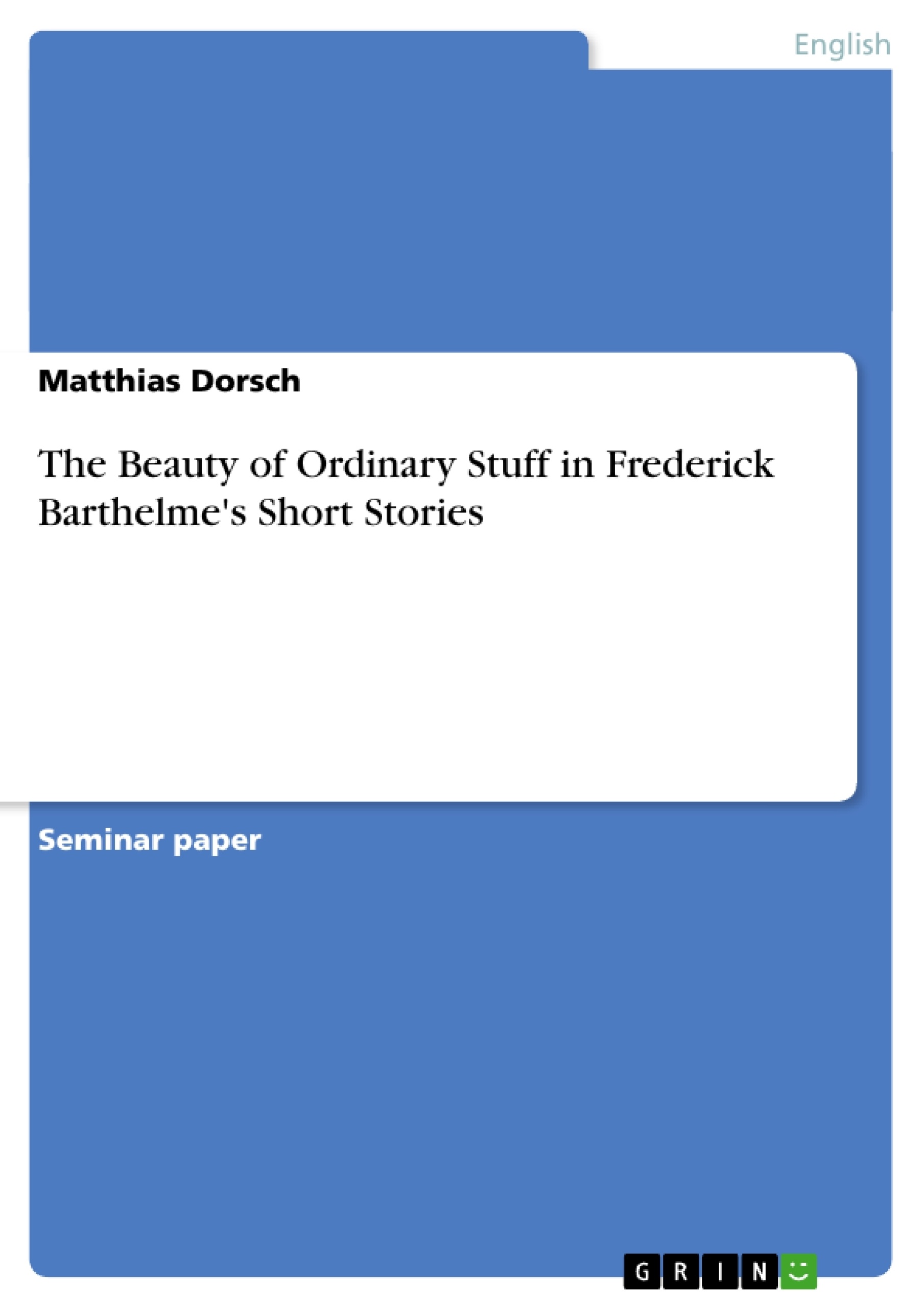The beauty of the ordinary stuff is an important element of minimalist literature. Especially Frederick Barthelme used elements like brands, surfaces, malls, parking lots - ordinary stuff - in his short stories. His special way of writing concerning things of everyday life is analyzed in this term paper.
Inhaltsverzeichnis (Table of Contents)
- Introduction
- Frederick Barthelme's Aesthetics
- The Author
- Minimalism – History and Critique
- Features of Minimalism
- Ordinary Stuff - Comparison between Carver and Barthelme
- Denial of Consumer Criticism
- What is the Ordinary Stuff
- Purposes and Benefits of Barthelme's Aesthetics
- Examples for Ordinary Stuff in Driver and Cleo
Zielsetzung und Themenschwerpunkte (Objectives and Key Themes)
This assignment aims to analyze Frederick Barthelme's concept of beauty, particularly his focus on the "ordinary stuff" in his short stories. The text explores how Barthelme challenges conventional notions of beauty by finding aesthetics in everyday objects and environments. It seeks to connect this unique perspective with traditional perceptions of beauty and examine how it is presented in his writing style.
- Barthelme's aesthetics and its focus on the "ordinary stuff"
- Minimalism as a writing style and its differentiation from postmodernism and realism
- The relationship between Barthelme's work and consumer society
- The concept of beauty and its subjective and culturally influenced interpretations
- The role of ordinary objects and environments in Barthelme's stories
Zusammenfassung der Kapitel (Chapter Summaries)
The introduction explores the concept of beauty, its subjective nature, and its influence by cultural imprints. It highlights the traditional association of beauty with nature, art, and higher spheres. The chapter then introduces Barthelme's work and his unique perspective on beauty, finding it in seemingly mundane aspects of everyday life.
The chapter on Frederick Barthelme's Aesthetics provides biographical information about the author, placing him within the context of literary minimalism. It discusses the history and critique of minimalism, highlighting its divergence from both postmodernism and realism. The chapter delves into the characteristics of minimalism and analyzes how Barthelme's approach differs from that of other minimalist writers. The chapter also examines Barthelme's rejection of consumer criticism and his intention to bring attention to the beauty of ordinary objects and environments.
The final chapter delves into specific examples of "ordinary stuff" found in Barthelme's stories, "Driver" and "Cleo." This chapter examines how these stories illustrate the author's concept of beauty and demonstrate his unique writing style.
Schlüsselwörter (Keywords)
The key concepts of this text include: Minimalism, Frederick Barthelme, beauty, ordinary stuff, consumerism, postmodernism, realism, aesthetics, literary style, and short stories.
- Citar trabajo
- Matthias Dorsch (Autor), 2009, The Beauty of Ordinary Stuff in Frederick Barthelme's Short Stories, Múnich, GRIN Verlag, https://www.grin.com/document/131289



